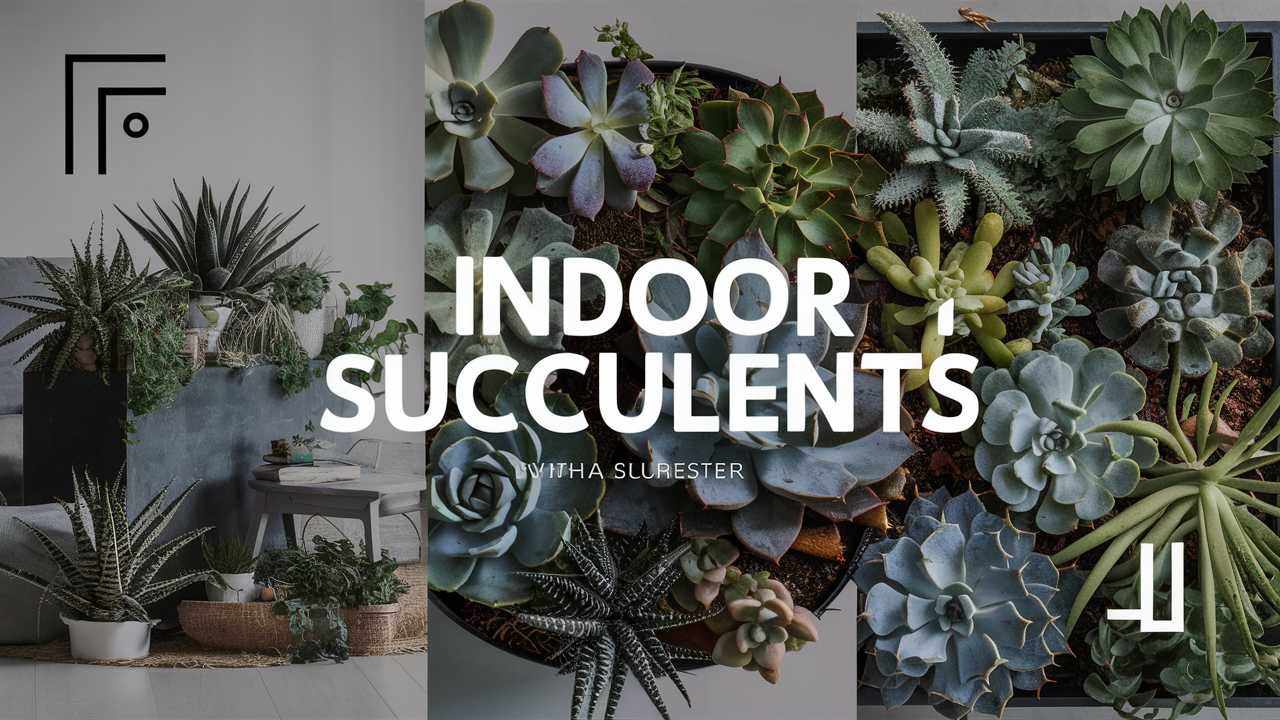On this page, we’ll explore some of the most popular indoor succulents, delving into what makes each of them special and how best to care for them. Whether you’re looking to brighten up your living space or add to your indoor garden collection, this guide will help you appreciate the diverse world of indoor succulents.
Burro’s Tail (Sedum morganianum)

Burro’s Tail is a stunning succulent celebrated for its trailing stems adorned with plump, teardrop-shaped leaves that glisten in shades of blue-green. This beautiful plant thrives in hanging planters or elevated surfaces, allowing its long stems to cascade downward. Memorable and charming, Burro’s Tail is an excellent choice for adding a touch of whimsy to your space.
Caring for Burro’s Tail is relatively straightforward. It prefers bright, indirect sunlight but can adapt to moderate light conditions. When watering, allow the soil to dry out completely between waterings; overwatering can lead to root rot. If you’re looking to propagate, simply trim a few leaves and let them dry for a day before planting them in well-draining soil. This succulent is not only visually appealing but also brings a delightful touch of nature indoors.
Zebra Cactus (Haworthiopsis fasciata)
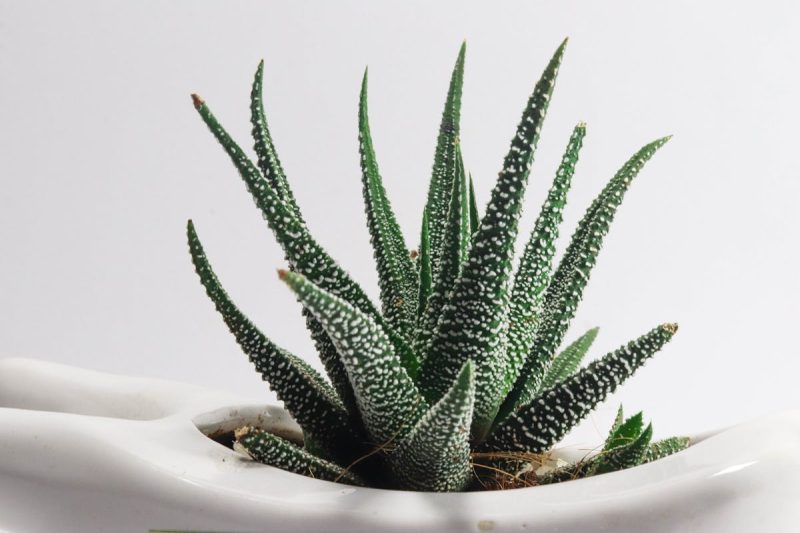
Zebra Cactus, known for its striking white-tipped, dark green stripes, resembles the coat of a zebra, hence its playful name. Apart from its unique appearance, this succulent is exceptionally hardy, making it ideal for beginners. Zebra Cactus thrives in bright, indirect light, though it can tolerate some direct sunlight.
One of the key aspects of caring for Zebra Cactus is understanding its watering needs. Like many succulents, it requires a well-draining soil mix, and it’s crucial to let the soil dry out between waterings. One of the most exciting features of Zebra Cactus is its ability to produce offsets, which can easily be separated and replanted. This makes it a fun plant to grow and share with friends.
Aloe Vera (Aloe barbadensis miller)
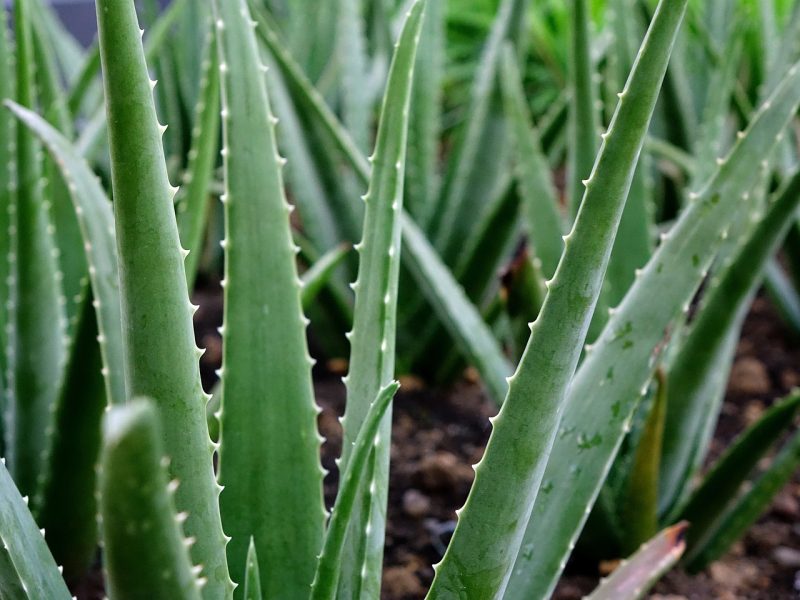
Aloe Vera is not just a gorgeous succulent but also a versatile plant known for its medicinal properties. The gel inside its thick leaves is widely used in skincare and natural remedies, making it a cherished plant in many households. Aloe Vera’s spiky, green leaves, often with a hint of grayish hue, lend a sculptural quality to any indoor space.
In terms of care, Aloe Vera prefers bright, indirect sunlight and well-draining soil. It’s crucial to avoid overwatering; typically, a thorough watering once every two to three weeks is sufficient, allowing the soil to dry out between waterings. Aloe Vera is also a great choice for beginners because it’s forgiving if you occasionally forget to water. Beyond its practical benefits, this succulent can sometimes bloom, producing beautiful tubular flowers when it is healthy and happy.
Crown of Thorns (Euphorbia milii)
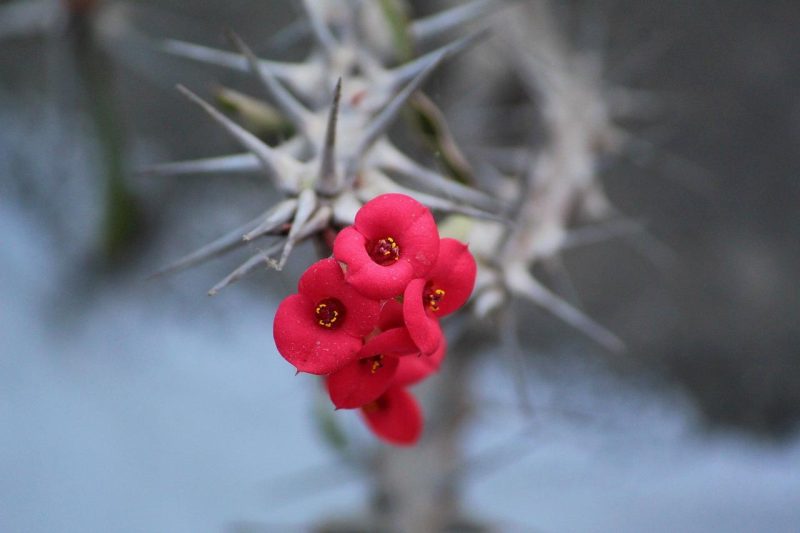
Crown of Thorns stands out with its striking appearance, featuring small, colorful blooms that can last for months. Its unique structure comprises thick, spiky stems and fleshy leaves, making it a great option for those who appreciate an unconventional-looking plant. The blooms can range from red to yellow, providing a bold pop of color in your home.
Caring for Crown of Thorns involves providing ample sunlight, as this succulent thrives in bright light and can even tolerate some direct sun. When it comes to watering, let the soil dry out completely before the next watering session; this plant is particularly vulnerable to root rot if it sits in soggy soil. Additionally, handle the plant with care, as it exudes a milky sap that can be irritating to the skin. With proper care, this succulent will reward you with showy blooms and a quirky look.
Hens-and-Chicks (Sempervivum tectorum)

Hens-and-Chicks is a delightful succulent that gets its name from its unique growth habit. The “hen” is the larger central rosette, while the “chicks” are smaller rosettes that surround it. This unique formation makes Hens-and-Chicks a fascinating plant to observe, as it spreads and fills in empty spaces in your garden or indoor planter.
This hardy succulent thrives in full sun and needs minimal care, making it perfect for beginners. It prefers well-draining soil and should be watered deeply but infrequently, allowing the soil to dry out between waterings. One exciting aspect of Hens-and-Chicks is its ability to withstand cold temperatures, so it can be a great option for sunny windowsills during the winter months. When established, this plant can produce stunning flowers on tall stalks, adding another layer of beauty.
String of Bananas (Senecio radicans)

The String of Bananas is named for its long, banana-like leaves that dangle gracefully from the stems, reminiscent of an exotic waterfall. This succulent is particularly beloved for its trailing nature, making it an excellent choice for cascading from shelves or hanging baskets. With its vibrant, green color, it’s sure to bring life to any indoor space.
String of Bananas thrives in bright, indirect sunlight but can also adapt to lower light conditions. The watering routine is similar to other succulents: allow the soil to dry out before watering again. This plant is relatively low-maintenance and is well-known for its ability to propagate easily from cuttings. If you’re keen to expand your succulent collection, you can simply trim a few stems and replant them in well-draining soil.
Lithops (Lithops spp.)
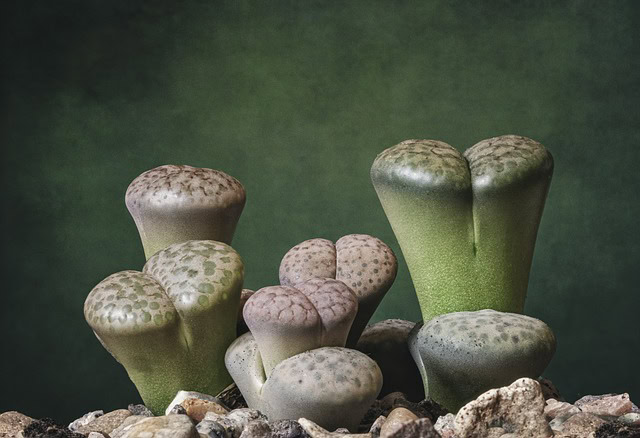
Lithops, also known as “living stones,” are fascinating succulents that mimic the appearance of pebbles or stones. Originating from southern Africa, these unique plants are known for their remarkable camouflage. Lithops generally have two leaves that split down the middle, with a slit that allows them to “breathe,” drawing moisture from the air.
These intriguing plants require bright light but should be protected from direct sunlight during the hottest parts of the day. Their watering needs are distinct; they require minimal water and should only be watered when the leaves begin to wrinkle. Lithops thrive on neglect and are truly a conversation starter. As they mature, many species will also produce beautiful, daisy-like flowers that emerge during their growing season.
Christmas Cactus (Schlumbergera)
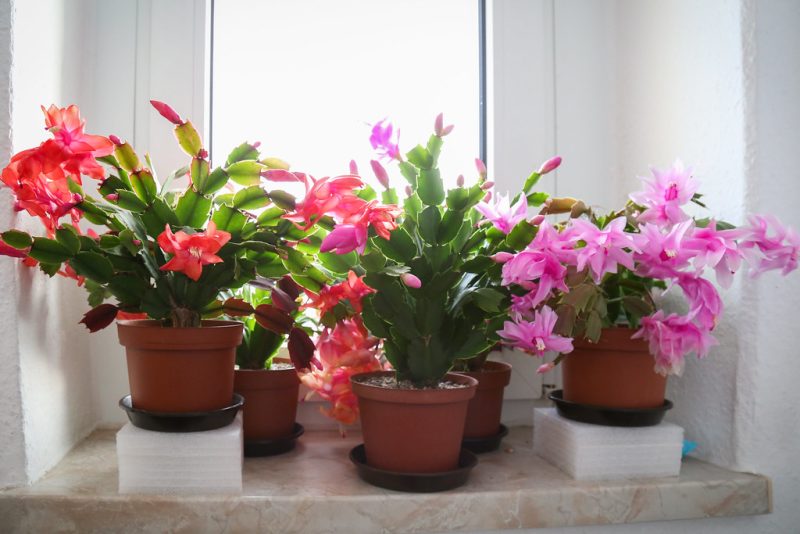
Christmas Cactus is a popular houseplant known for its stunning blooms that typically appear around the holiday season. Unlike traditional cacti, this plant features flat, segmented leaves and produces vibrant flowers in shades of pink, red, or white that can last for weeks. Its enchanting appearance during the holidays makes it a favorite among plant lovers.
Caring for a Christmas Cactus involves providing bright, indirect light and moderate watering, allowing the soil to dry out slightly between waterings. It prefers to be root-bound, so repotting too often can hinder its growth and flowering potential. To encourage blooms, a period of cooler temperatures and reduced watering before the holiday season can help trigger the flowering process. With proper care, this cactus can be a lovely addition to your holiday decor.
Ponytail Palm (Beaucarnea recurvata)
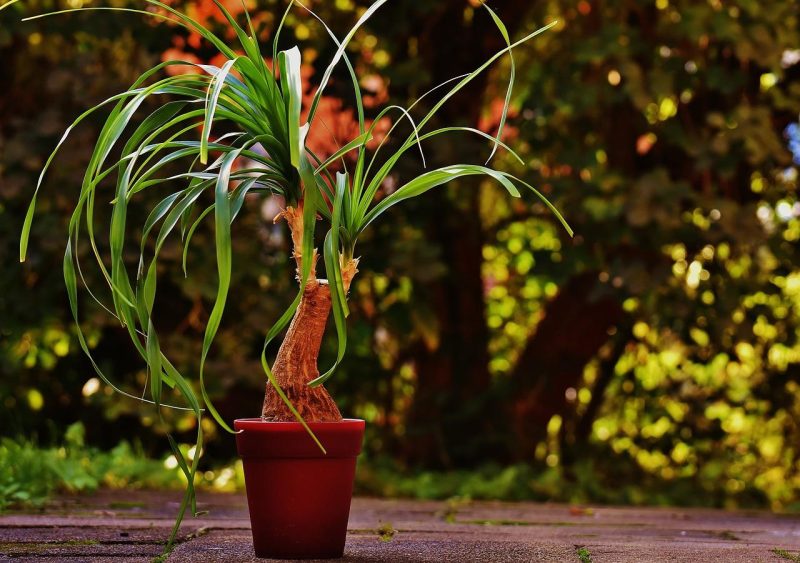
Despite its name, the Ponytail Palm is not actually a palm but a unique succulent known for its bulbous trunk and long, cascading leaves that resemble a ponytail. This easy-care plant is a popular choice for those looking to add a tropical vibe to their indoor space. The trunk stores water, allowing it to thrive in various conditions.
Ponytail Palm prefers bright, indirect sunlight but can tolerate lower light conditions. It is essential to let the soil dry out completely before watering; too much moisture can lead to root rot. One of the fun aspects of this plant is that it can grow quite tall over the years, adding a stunning focal point to your indoor garden. A little pruning can help maintain its shape and encourage new growth.
Snake Plant (Sansevieria trifasciata)
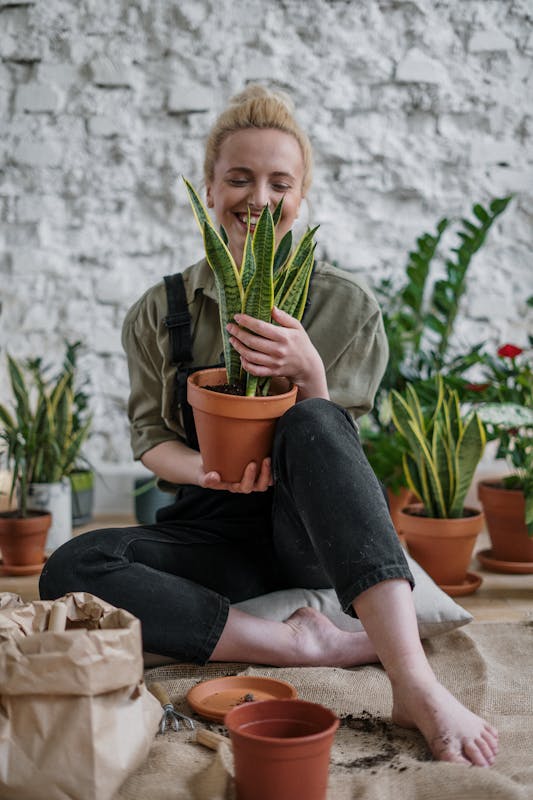
The Snake Plant, also known as Mother-in-Law’s Tongue, is a stalwart within the indoor succulent community known for its striking architectural leaves that grow upright and can reach considerable heights. With its low-maintenance nature and ability to thrive in various light conditions, including low light, this succulent is almost foolproof for newcomers.
Snake Plants require minimal watering; in fact, it’s better to err on the side of underwatering than overwatering. A well-draining potting mix is essential to prevent water from sitting at the roots. They also have the added benefit of being excellent air purifiers, improving indoor air quality. Their sleek, modern appearance makes them a fantastic choice for any indoor environment. The bonuses of easy care and health benefits make the Snake Plant a must-have.
String of Pearls (Senecio rowleyanus)
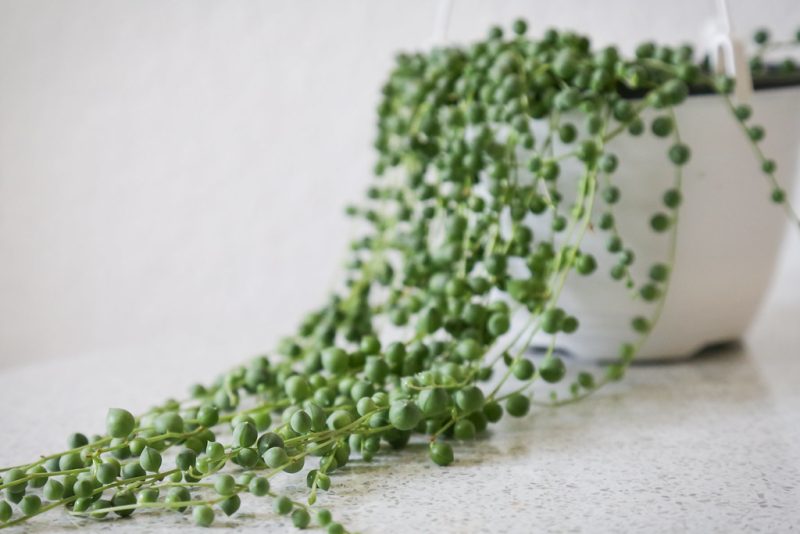
String of Pearls is a striking succulent known for its spherical, bead-like leaves that cascade delicately from its stems. This plant provides an artistic touch to any space, with its unique and whimsical appearance making it a favorite for many indoor gardeners. The leaves resemble a strand of pearls, hence the name, and it’s a joy to see it grow in hanging pots.
This succulent requires bright, indirect sunlight and should be watered sparingly—allow the soil to dry out completely between waterings. String of Pearls can be sensitive to overwatering, so be cautious. Additionally, it can produce small, fragrant flowers under the right conditions, further enhancing its appeal. With its trailing stems and beautiful design, this plant is sure to captivate anyone who sees it.
Panda Plant (Kalanchoe tomentosa)
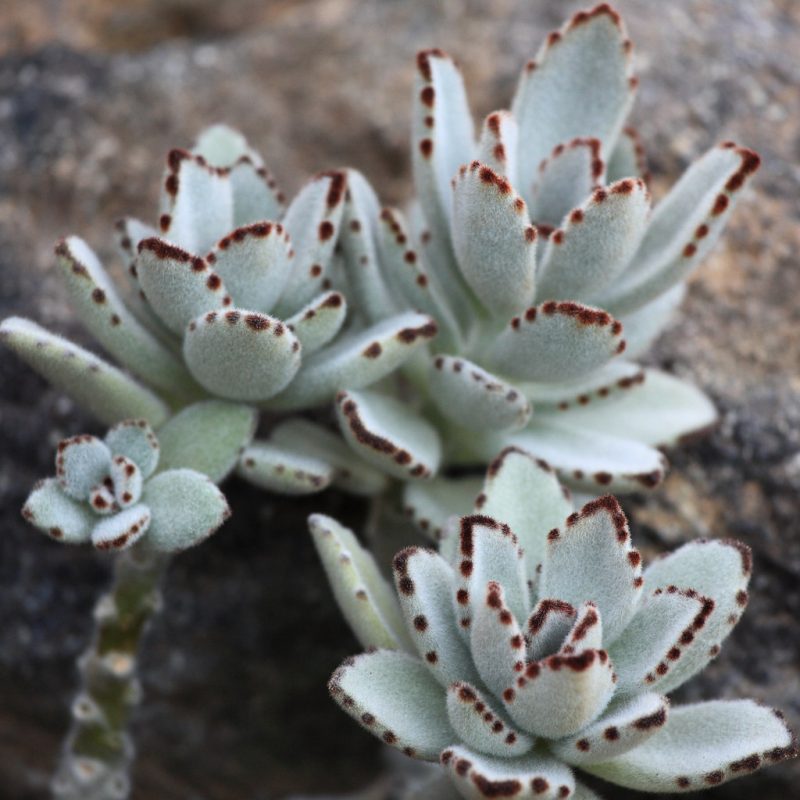
With its fuzzy leaves and whimsical appearance, the Panda Plant is a great indoor succulent that brings a soft texture to any space. The leaves are covered in a fine layer of hairs, giving them a unique touch, and their distinctive grey-green color adds an exotic flair.
Panda Plants thrive in bright, indirect sunlight and will benefit from well-draining soil. They require careful water management; letting the soil dry out completely between waterings is crucial for their survival. With a little care, you may notice your Panda Plant blooming, producing small, tubular flowers that add to its charm. Its manageable size and stunning appearance make it a lovely addition to any succulent collection.
Kalanchoe (Kalanchoe spp.)
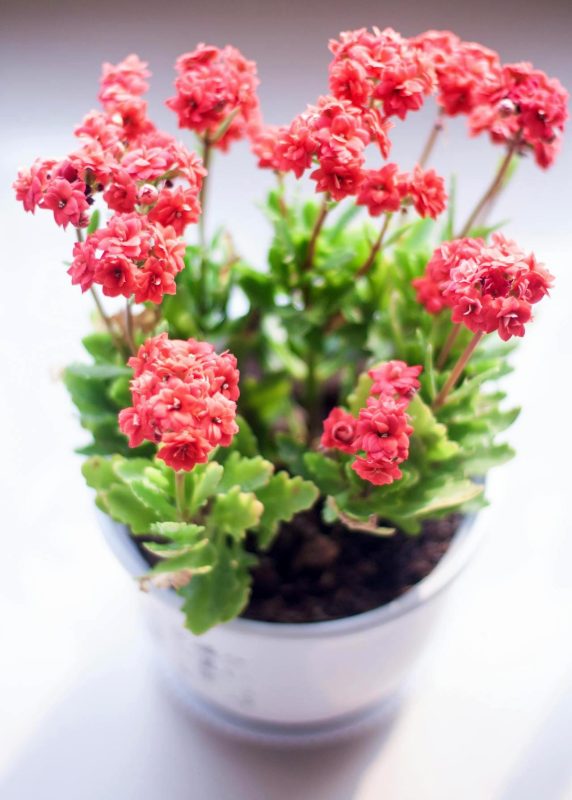
Kalanchoe is a diverse genus of flowering succulents known for their colorful blooms and fleshy leaves. They make excellent indoor plants due to their vibrant flowers and relatively easy maintenance. Popular varieties like Kalanchoe blossfeldiana produce clusters of blooms in a variety of colors, making them a popular choice for festive occasions.
Kalanchoe thrives in bright, indirect sunlight and prefers to be watered when the top inch of soil is dry. To maintain healthy growth and prolong blooming, be sure to remove any spent flowers. This will encourage the plant to redirect energy toward producing new blooms. Kalanchoes are not only decorative but also bring a lively atmosphere into any room.
Pencil Cactus (Euphorbia tirucalli)
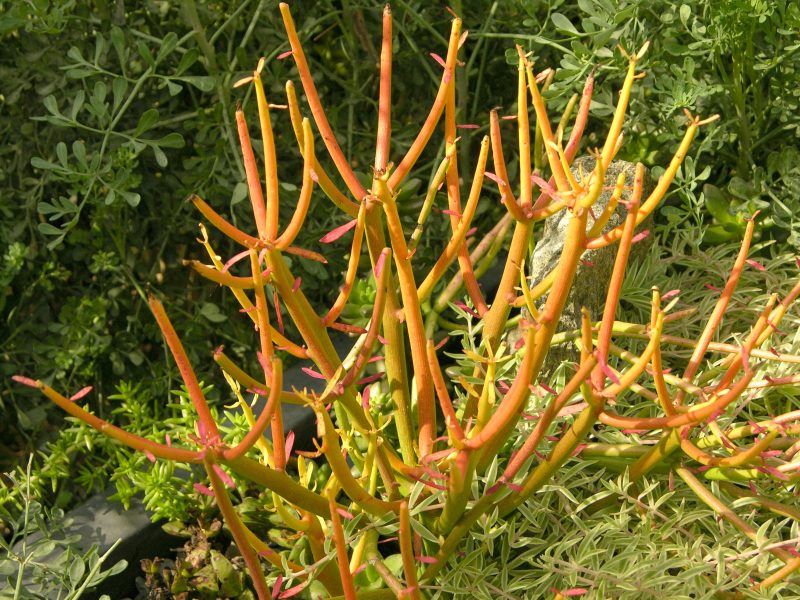
The Pencil Cactus is a unique succulent that features thin, pencil-like stems that grow upright and can reach impressive heights. While it may resemble a cactus, it’s actually a member of the Euphorbia family and is semi-succulent, storing water in its stems. This unusual appearance makes it a striking centerpiece for any indoor garden.
Pencil Cactus prefers bright, indirect sunlight and well-draining soil. Watering should be performed with caution, allowing the soil to dry out completely between watering sessions. Handle it carefully, as the milky sap it produces can be irritating to the skin. Over time, this plant can become a stunning focal point in your home, with the potential to grow into an eye-catching statement piece.
African Milk Tree (Euphorbia trigona)
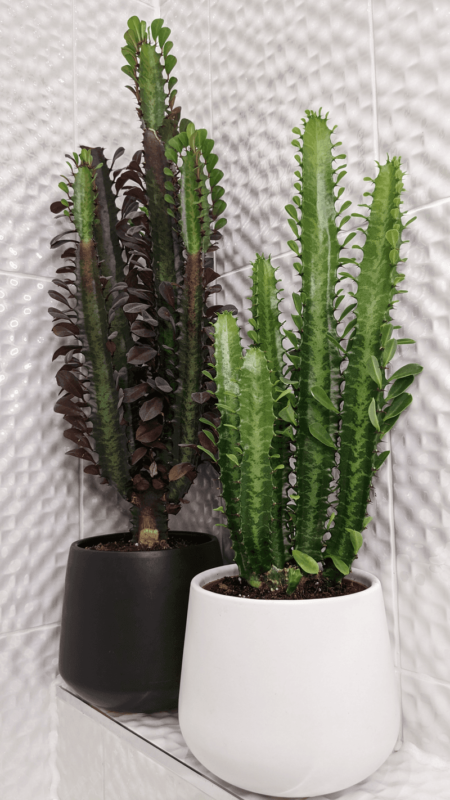
The African Milk Tree is a striking succulent known for its upright growth and multi-branched structure. The green stems are adorned with small spines, giving it a rugged look that many plant lovers appreciate. This plant’s unique shape and vibrant green color can bring an enchanting touch to your indoor space.
Caring for the African Milk Tree is simple; it thrives in bright light and well-draining soil. As a drought-tolerant plant, it prefers to dry out between waterings. The African Milk Tree is particularly known for its rapid growth and can reach significant heights over time. It’s a bold addition to any indoor garden, bringing a dramatic element to your decor.
Bear Paws (Cotyledon tomentosa)
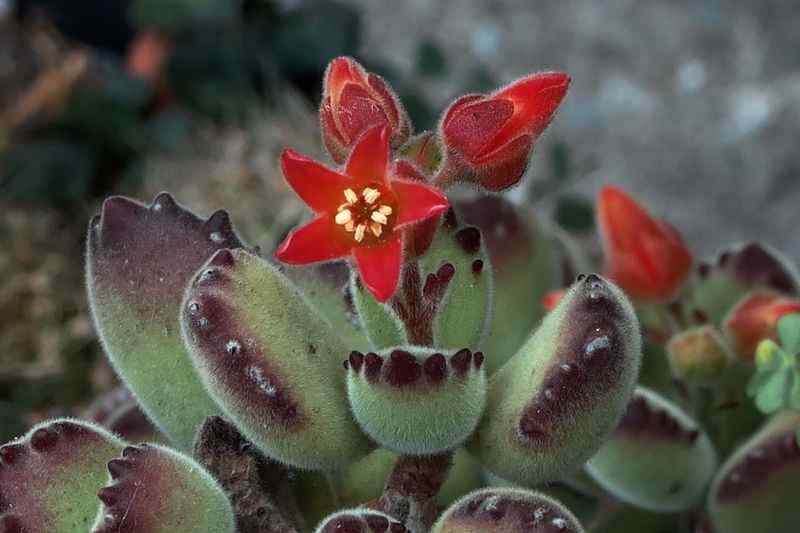
Bear Paws enchants with its fuzzy, oval-shaped leaves that resemble the feet of a bear, hence the name. These charming succulents boast leaves that are often tinged with red at the edges, creating a delightful contrast against their soft green background.
Bear Paws prefer bright, indirect sunlight and well-draining succulent mix. They have modest water requirements; allowing the soil to dry out between waterings is crucial for their survival. When healthy, they can develop small clusters of tubular flowers. Their unique appearance and reasonable care requirements make Bear Paws a wonderful addition to any succulent collection.
Devil’s Backbone (Euphorbia tithymaloides)
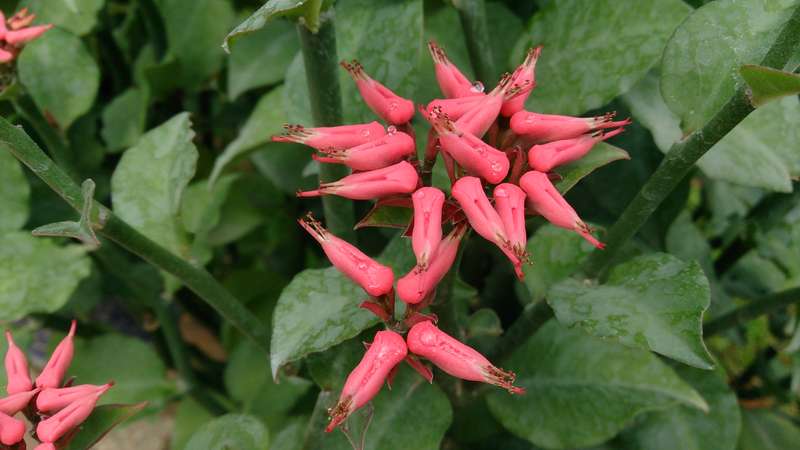
Devil’s Backbone is an intriguing succulent characterized by its zig-zag growth pattern and thin, green stems adorned with bright red or white edges. This architectural plant adds dynamic lines to your indoor displays, making it visually striking and conversation-worthy.
Caring for Devil’s Backbone involves providing it with bright, indirect sunlight and allowing it to dry out thoroughly between waterings. As a member of the Euphorbia family, this plant contains a milky sap that should be handled with care, as it can be irritating to the skin. With proper care, Devil’s Backbone can produce small flowers, adding a touch of beauty to its unique form.
Ogre Ears Succulent (Cotyledon orbiculata)
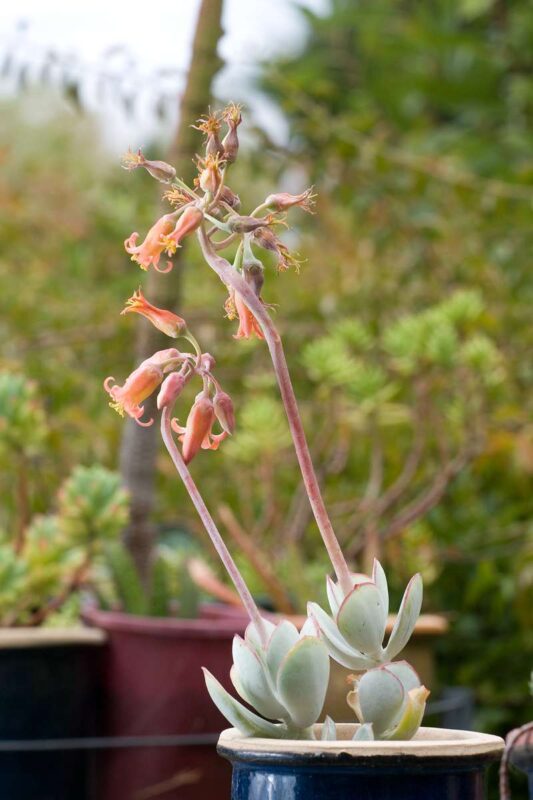
Ogre Ears is a whimsical succulent with thick, paddle-shaped leaves that have a charming, wavy appearance. Its quirky name reflects its unique look, making it a conversation starter among fellow succulent enthusiasts.
Caring for Ogre Ears involves providing bright, indirect light and allowing the soil to dry out completely between watering. This succulent is relatively low-maintenance, making it a suitable choice for beginners and expert plant owners alike. As it matures, it has the potential to produce small, bell-shaped flowers that further enhance its distinctive beauty.
Ox Tongue (Gasteria spp.)

Ox Tongue is a unique succulent known for its thick, textured leaves that can resemble the tongue of an ox, thanks to their unusual shape and pattern. This low-maintenance succulent is an excellent choice for those who want to add an interesting texture to their indoor garden.
Ox Tongue prefers moderate to bright indirect light and must be planted in fast-draining soil to prevent root rot. Watering should be infrequent; allowing the soil to fully dry out between sessions is key. With proper care, this succulent can grow into a lovely rosette and can produce tubular flowers, adding an exciting aspect to its care regimen.
Pinwheel Desert Rose (Adenium obesum)
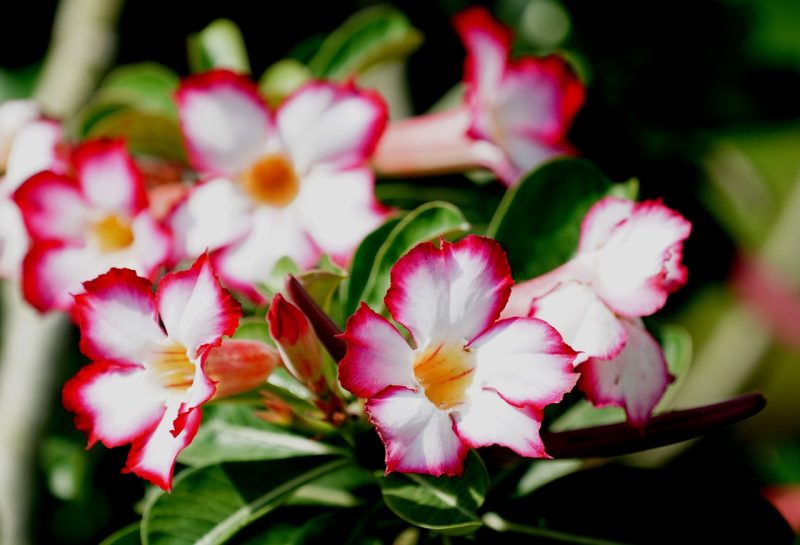
Pinwheel Desert Rose is renowned for its exquisite, trumpet-shaped flowers that appear in a variety of colors, from pink to white to red. This succulent is particularly popular for its beautiful blooms and interesting, thick trunk that gives it a bonsai-like aesthetic.
This succulent thrives in bright sunlight and well-draining soil. Watering should be judicious; allow the soil to dry completely before the next watering. The Pinwheel Desert Rose will bloom more profusely when consistently provided with warmth and light. With the right attention, this plant can become a stunning centerpiece in your collection.
Wax Flower (Hoya spp.)
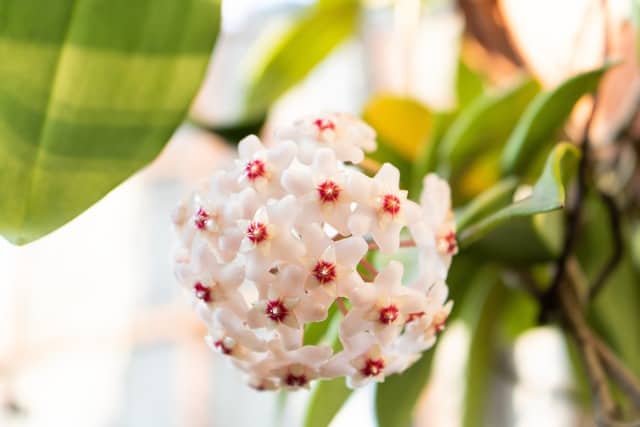
Wax Flowers are a group of attractive, flowering succulents known for their waxy leaves and clusters of fragrant blooms. These lovely plants are often grown for their beautiful flowers, which resemble little stars and come in various colors and sizes.
Hoya thrives in bright, indirect sunlight and needs well-draining soil to flourish. Watering should occur when the top inch or two of the soil is dry, ensuring that roots do not sit in water. With patience and care, your Wax Flower can produce an abundance of clusters, filling your space with natural beauty and a sweet scent.
ZZ Plant (Zamioculcas zamiifolia)
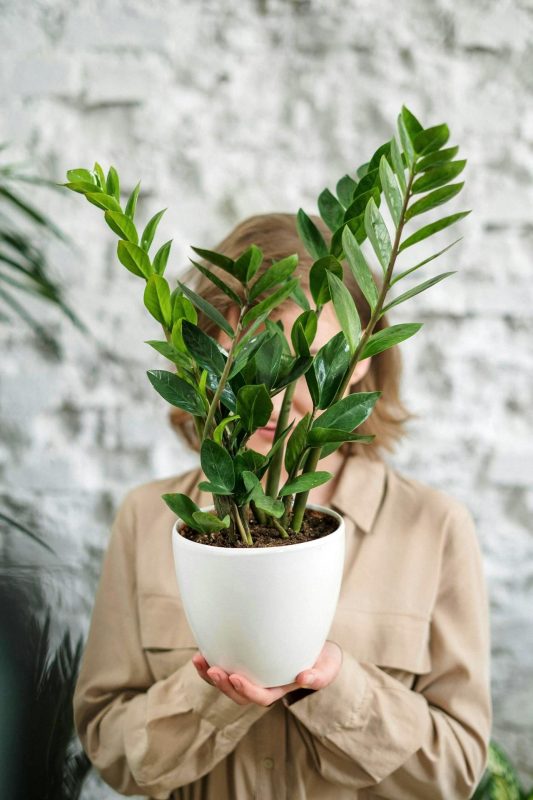
ZZ Plants are beloved houseplants and succulents known for their distinctive glossy leaves and ability to thrive in low-light conditions. Their striking appearance and lower maintenance needs have made them a popular choice for various indoor settings.
ZZ Plants prefer well-draining soil and thrive in moderate light, though they can tolerate low light and infrequent watering. The unique attribute of the ZZ Plant is its ability to store water in its thick roots, making it resistant to drought. Though they don’t bloom often when kept indoors, they add a unique touch of green to any space and are an excellent choice for those new to plant care.
Moon Cactus (Gymnocalycium mihanovichii)
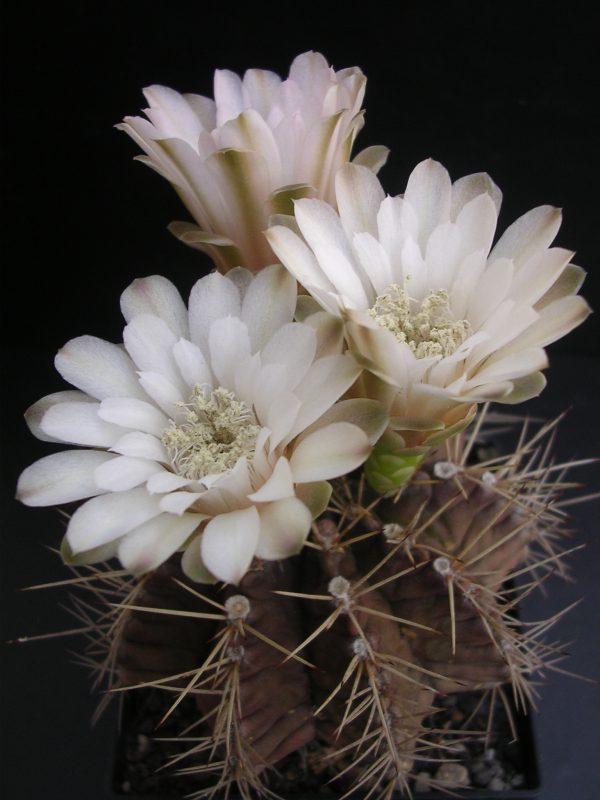
Moon Cactus is a striking succulent that features a colorful, rounded top grafted onto a green base, creating a vibrant two-tone effect. The colorful top typically comes in shades of yellow, pink, or red, making it a fun and playful addition to any indoor collection.
Caring for Moon Cactus requires bright, indirect sunlight and a well-draining cactus mix. This unique succulent does not need frequent watering; in fact, it’s best to wait until the soil is completely dry before watering again. While it can bloom, flowering is less common when grown indoors. Its whimsical look and low maintenance needs make Moon Cactus a cheerful addition to any plant lover’s collection.


